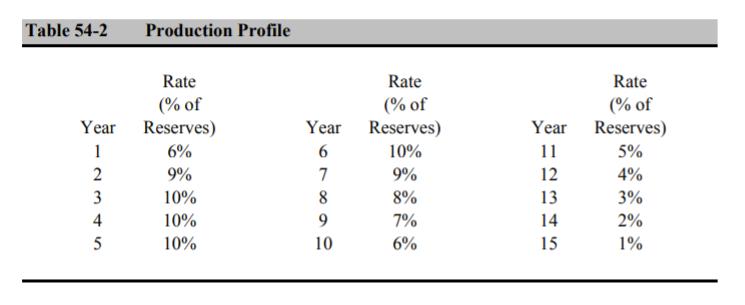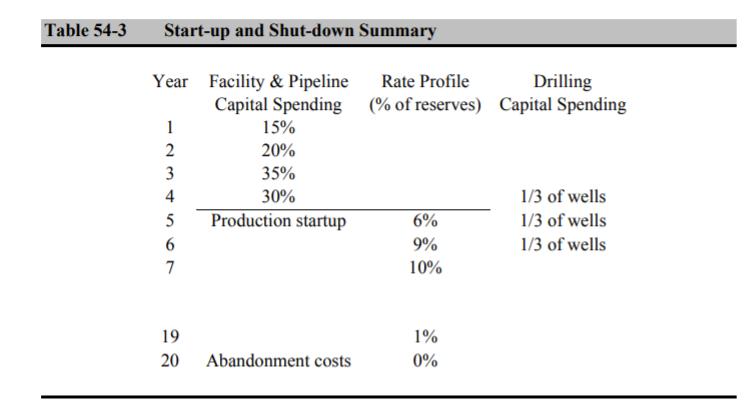Question
Petrotechnical Resources of Alaska Whirlwind Exploration Company has identified northern Alaska as a prospect for oil and gas exploration. The region is considered a world
Petrotechnical Resources of Alaska Whirlwind Exploration Company has identified northern Alaska as a prospect for oil and gas exploration. The region is considered a world class petroleum system, and it is famous for its huge discovered oilfields and vast expanses of under-explored land. The region is also known for its high cost structure and relatively low wellhead oil price due to distance to market. Oil and gas exploration is inherently risky. In exploration areas like northern Alaska, a geologist is lucky if he finds producible oil in one out of four wildcat wells. To make matters worse, only one in three geologic successes may be large enough to be a commercial development. Given these odds, before committing to an exploration program Whirlwind must carefully compare the area with other investment opportunities. Whirlwind has studied the geology, noted the field sizes of existing fields, and gathered data about wellhead price and development costs. As a first step to determine whether Alaska is worthy of investment, Whirlwind must calculate how large a field must be in order to break even. This breakeven threshold size is often referred to as the “minimum economic size.” The geoscientists have mapped a prospect that is 100 miles from a producing oil field. The seismic data and well information of nearby wells indicates that the range of reserves can be described with a log-normal distribution. Statistical data from fields all over the world have determined that the three components that define reserve size—area, net pay (≡ average formation thickness), and recovery factor—can also be described with log-normal distributions. Using the available seismic data, net pay of nearby wells, and recovery factors of analogous producing fields, a Monte-Carlo simulation has been completed. This has resulted Table 54-1, which defines a “reasonable” combination of area, net pay, and recovery factor for a range of reserve sizes.

The reservoir engineers have determined that producing wells for the field should be spaced at one well per 160 acres to recover the reserves in the optimal time frame. They have also provided Table 54-2, which describes the field’s production profile. The drilling engineer has determined that the wells will cost $8 million per well to drill and complete. He has assumed that one-third of the wells will be drilled before production start-up and two-thirds of the wells will be drilled following start-up.

The facility engineer has determined that the cost of the process plant and infield pipelines is a linear function of peak oil rate with a substantial fixed cost for gravel and logistics. The equation for facilities costs is:
Facility Capital Costs = 100,000,000 + 8,000 * POR where POR = Peak oil rate (barrels per day)
The cost of a sales line to transport sales quality crude to the metering station at pump station 1 of the Great Northern Pipeline has been estimated to be $4 million per mile. The operations department has determined that the operating costs are $12 per barrel. The oil marketing specialist has estimated the sales price of crude at pump station 1 at $45 per barrel, flat real, for the field’s life. The finance department has determined that a 25% interest rate should be used to evaluate this prospect. As summarized in Table 54-3, the engineers and permitting specialists have determined that the facilities and pipeline capital will be spent over four years. The operations department has estimated that abandonment costs will be equal to 20% of facility and pipeline capital costs, in the year after the field is shut-in.

Given this information about the potential size of the field, its relationship to size and area, the costs to develop and operate the field, and the sales price of crude oil, what is the minimum economic size of a field at his location?
Suggestions
1. Pick a reserve size (say 300 million barrels of oil).
2. From this determine the peak daily oil rate and the facility and pipeline costs.
3. Determine the number of wells for the area associated with the reserve size, and then calculate the drilling costs.
4. Build a cash flow table and calculate the PW and IRR.
5. Pick a second reserve size on the opposite side of PW = 0. Interpolate to find the minimum economic size.
Table 54-1 Reserve Size, Area, Net Pay, and Recovery Factors Area Reserves (bbl) (acres) 100,000,000 6,050 200,000,000 8,800 300,000,000 11,000 400,000,000 12,600 500,000,000 14,100 600,000,000 15,300 Net Pay (feet) 65 77 85 91 96 102 Recovery (bbl/acre-ft) 256 295 320 350 370 385
Step by Step Solution
3.48 Rating (165 Votes )
There are 3 Steps involved in it
Step: 1
To determine the minimum economic size of the field at this location we need to follow the suggestions provided and perform the calculations step by step Lets go through the process Step 1 Pick a rese...
Get Instant Access to Expert-Tailored Solutions
See step-by-step solutions with expert insights and AI powered tools for academic success
Step: 2

Step: 3

Ace Your Homework with AI
Get the answers you need in no time with our AI-driven, step-by-step assistance
Get Started


